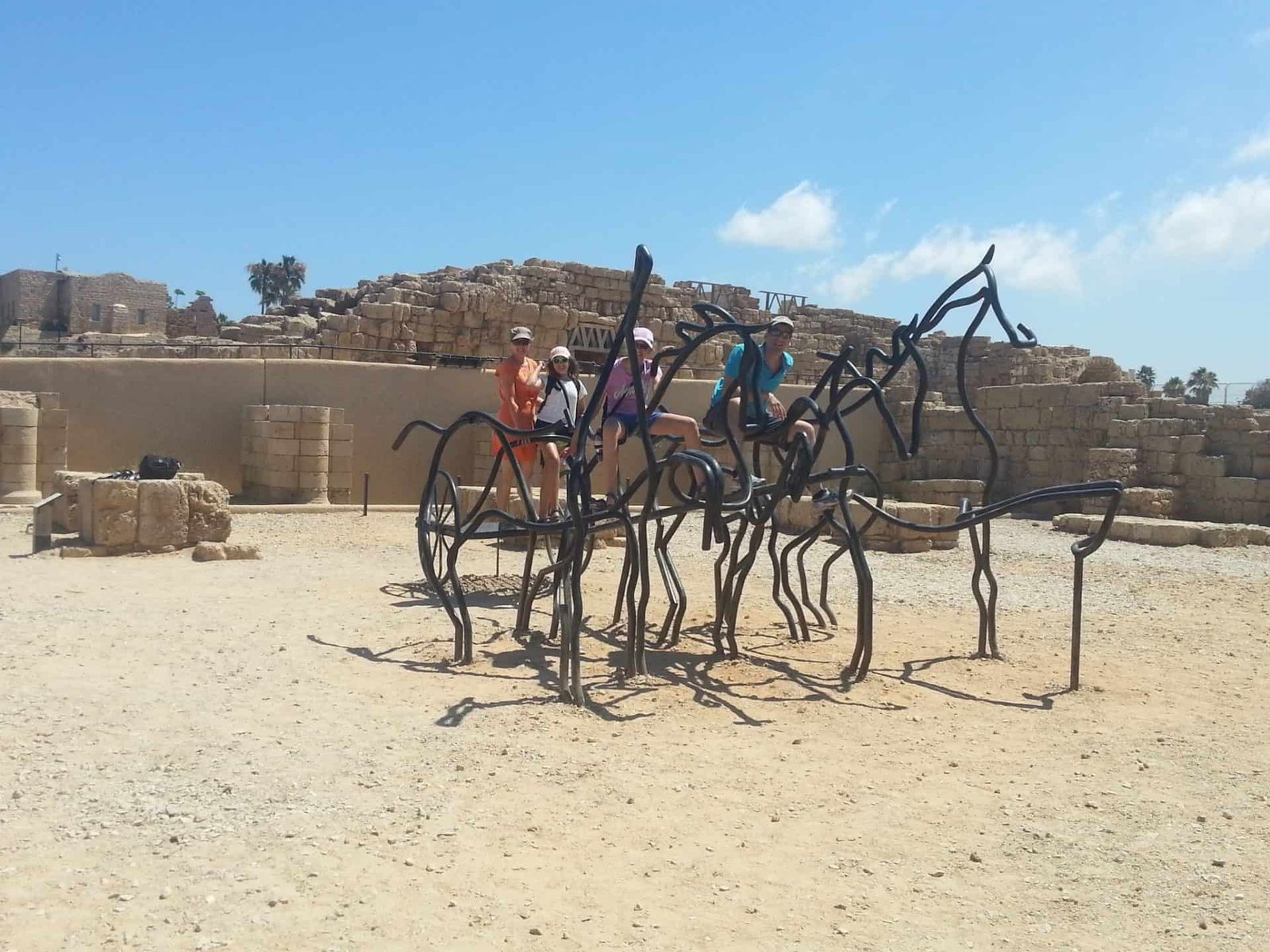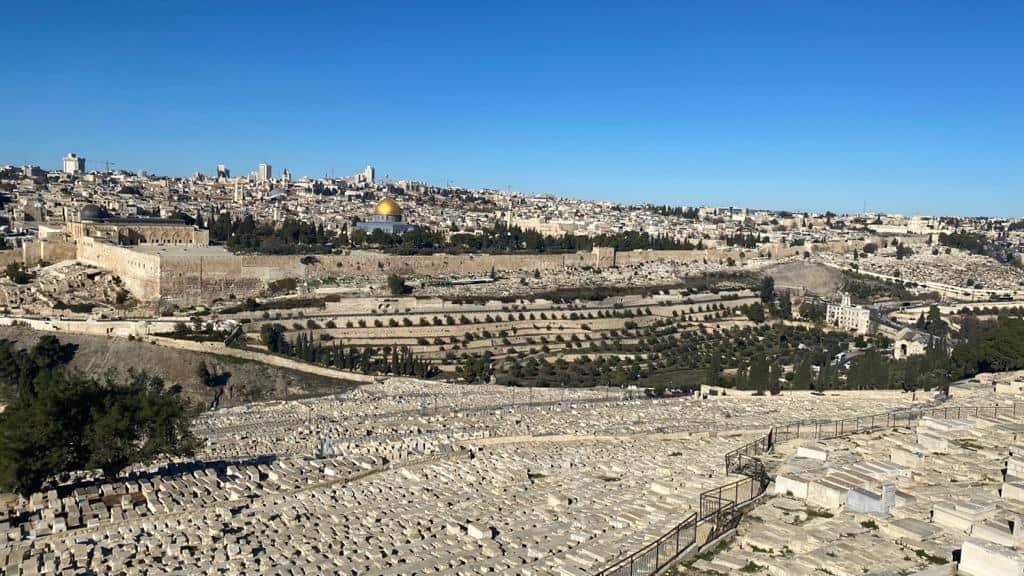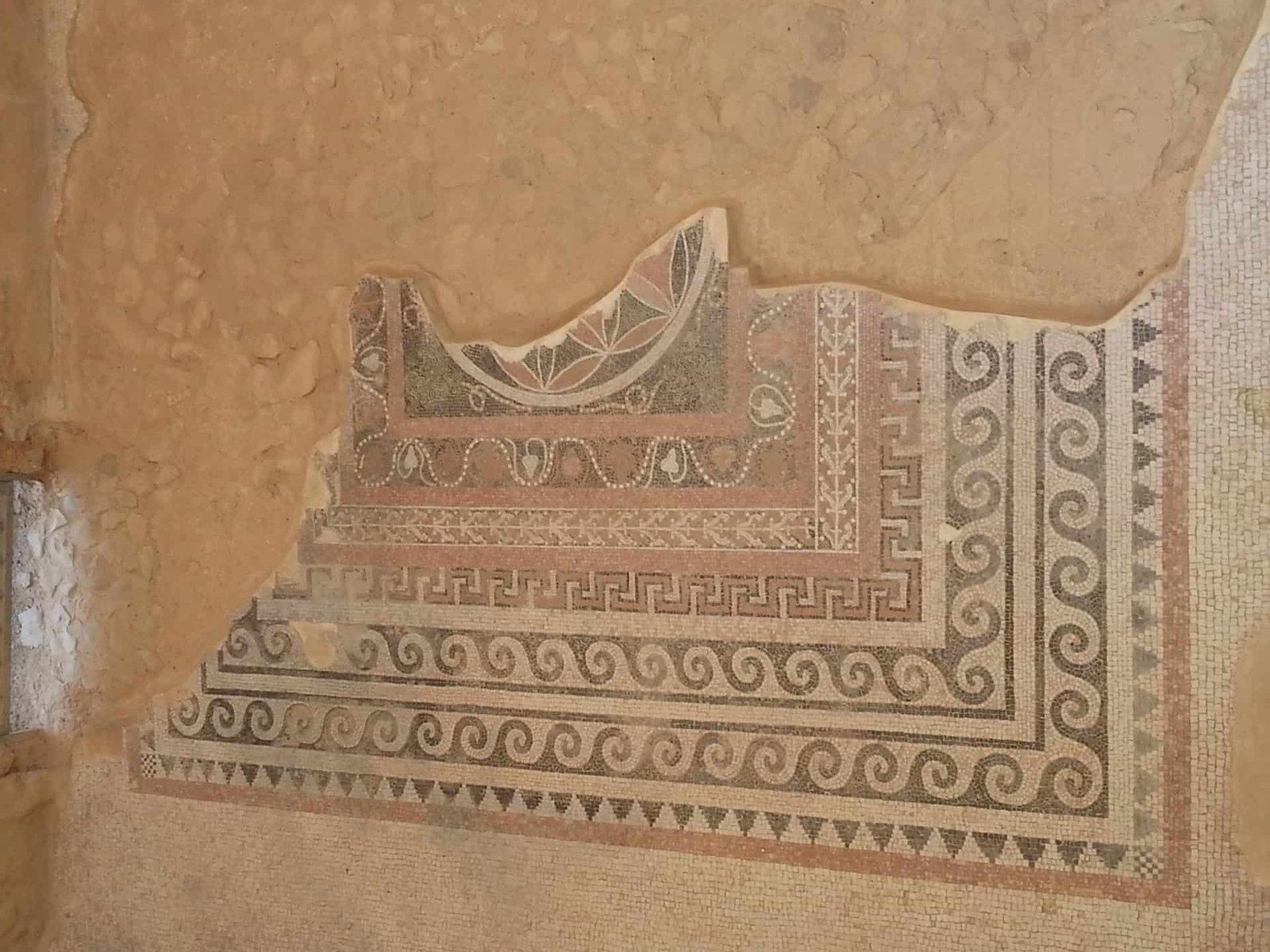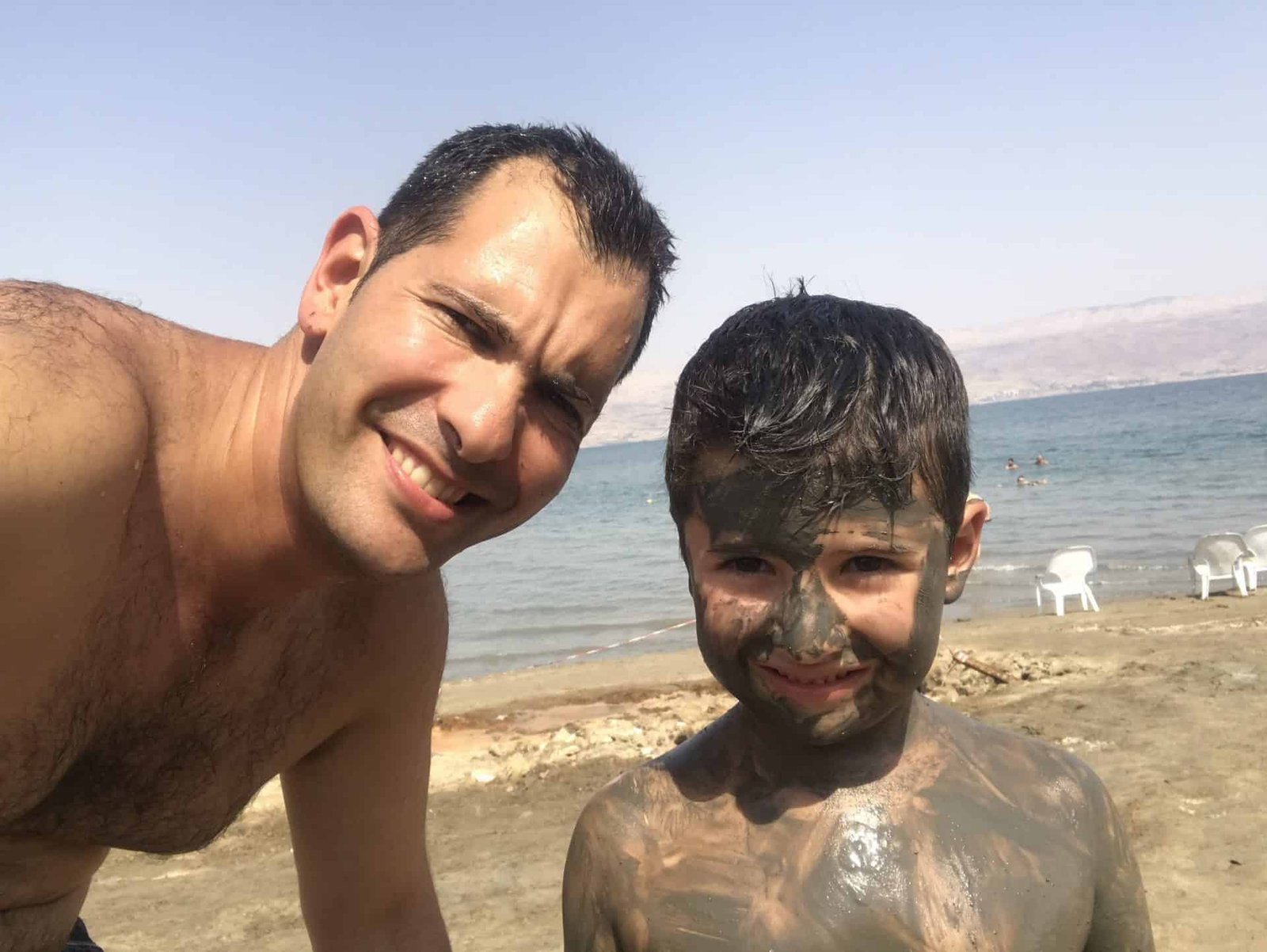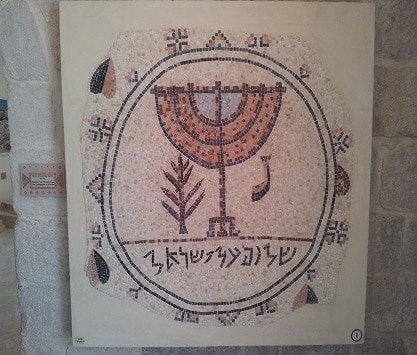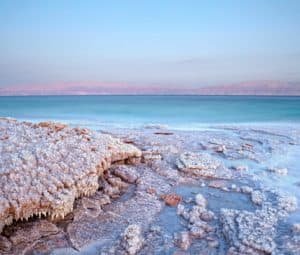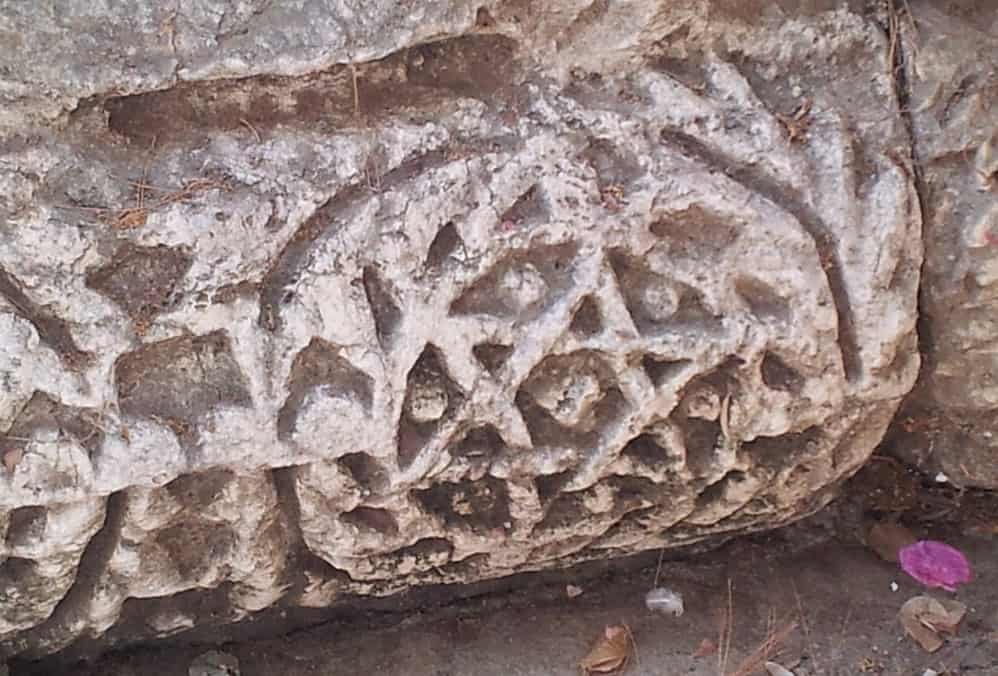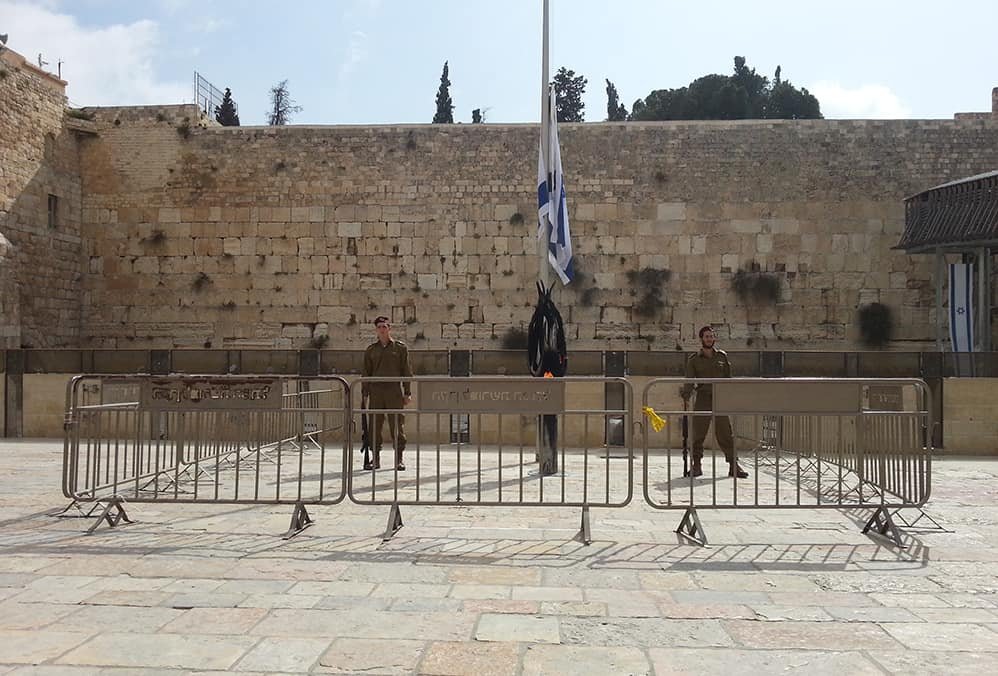

Shalom and welcome to Israel!
A drive down to the shimmering blue coastline of Israel will take us to the port city of Jaffa. We’ll tour its Old City, starting with the ancient sea port, and spend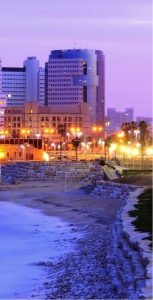 some time at the colorful galleries and shops, giving us a taste of the west and east meeting there. We’ll learn all about the most important port city in the history of the Holy Land. All the different rules who have passed through it, starting with Pharaoh and through to the famous conqueror, Napoleon.
some time at the colorful galleries and shops, giving us a taste of the west and east meeting there. We’ll learn all about the most important port city in the history of the Holy Land. All the different rules who have passed through it, starting with Pharaoh and through to the famous conqueror, Napoleon.
We’ll also recount how important biblical figures such as King Solomon and the prophet Jonah were tied to it. Jaffa have a special importance to the Christian faith, as well as the upgrade it has been going through in the last couple of years.
Continuing this theme of cultures mixing, we will head for Tel Aviv and the
“White City”, which has won the city its title the Bauhaus Capital of the World. We’ll see the preservation of the buildings shaped in this German architectural style, declared by UNESCO to be a World Heritage Site. Amongst these is The Independence Hall, where David Ben-Gurion declared the independence of the State of Israel in 1948.
The city’s vivid cultural significance is also expressed through its myriad of amazing museums, such as the Tel Aviv Art Museum, the Palmach Museum, the Eretz Israel Museum, The Ayalon Institute (in Rehovot) and the Diaspora Museum, and we’ll make sure to visit some of them.
The memory of the late Israeli Prime Minister Yitzhak Rabin and the profound implications of his murder will bring us to the Rabin Square, named after him in the wake of this shocking event.
Some free time will be spent in the intersection of the King George and Sheinkin streets, famous for its youthful vibe, for the fun shopping and dining experience and for the opportunity to watch the people who make up this city’s energetic and carefree atmosphere.
Nearby, the open-air Carmel Market, known for its fruits, vegetables and spices, will prove a real treat for all of the senses. On Tuesdays and Fridays, the Nachalat Binyamin Market also bursts into life with its stalls, offering handicrafts of every kind.
No visit here is complete without a stop at the Tel Aviv Port and we’ll conclude our day there with some relaxing coffee and a luminous sunset over the Mediterranean Sea.
The northern region of Israel beckons us with its combination of green nature and historic sites. On this day, we’ll answer its call as we head in the direction of the beautiful Caesarea National Park, where we’ll observe the magnificent remains of Herod’s city, the Roman capital, the port and the fortified Crusader fort. We’ll also explore the Roman Theater and the hippodrome, then walk along the promenade to the renovated and charming Caesarea Port area.
Another UNESCO world heritage site we’ll encounter is Tel Megiddo. The term Armageddon originates from this spot, which is the biggest archeological hill in
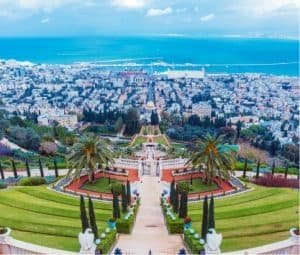
Israel (and the world) and considered to be by many the most interesting one of them all. This spot consists of one of the most important junctions in the history of the human race and we will inspect its many hidden secrets through, among others, the palace, the stables, the silo, the gates and the water system which await us there.
Our next stop for the day is the third most populous city in Israel, Haifa.
Situated on the ever green and lush Mount Carmel, we will see The Baha’i Shrine and Gardens, considered to be the second most sacred place in the world by followers of the Baha’i faith (after the shrine in Acre). Many say that these gardens are even more spectacular than those found at Versaille.
Complimenting the visage of the Gardens themselves is the breathtaking, panoramic view of both the city and the bay it’s built around from the vantage point of the Louis Promenade
The ancient city and UNESCO World Heritage Site of Acre awaits us and on the fifth day of our journey, we’ll discover its numerous gems built by the Crusaders 
Another point of interest is the Turkish Hamam (bath), which we’ll follow with a spellbinding walk through the underground Knights-Templars Tunnels from the 12th century. They will lead us to visits in the Oriental Market, the Old City, the Arab Mosque and the Old Port. If time permits it, we’ll also stop at the incredible and singular Tunisian Synagogue.
The breathtaking limestone grottos of Rosh Hanikra, found on the border with Lebanon are next for us, a sight of natural beauty where the sea re-shapes the coast.
We’ll cross back into the Galilee and ascend its mountains to spend the afternoon in Tzfat (Safed), another of the “four holy cities” and the home of Lurian mysticism of the Kabbalah.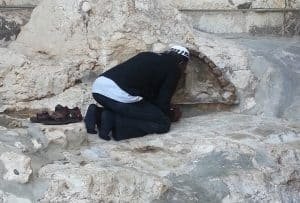
A branch of Jewish mysticism conceived by 16th Century Rabbi Isaac Luria (the traditional author of the seminal mystic work, the Zohar). A stroll along the lanes of the Old City will allow us to observe its many synagogues, as well as its renowned artists’ colony.
From one sea to another, we’ll travel on to the city of Tiberias, the historic resort town built on the shore of the Sea of Galilee (known in Hebrew as the Kinneret) and one of Israel’s “four holy cities”, settlements which have never gone without a Jewish presence for over thousands of years.
This day will be dedicate for the amazing Golan Heights. It is one of the most incredible areas in Israel, rich in both history and greenery.
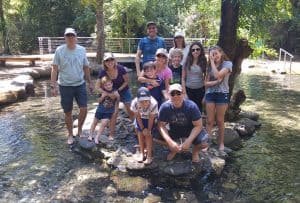
Our day will start at Tel Dan, and archeological site preserving the town Laish, which existed here since the biblical days of Abraham and which was later conquered by the tribe of Dan after a long and arduous fight against the Philistines.
It later becomes the city that King Jeroboam decided to turn into the capital of his northern Kingdom of Israel, building there a temple for the Israelites to worship at.
The most important archeological inscribing in Israel was found here and this is also the site of the second most ancient Canaanites gate in the world.
The nature reserve here protects the Dan stream, which is also the main source of water to the Sea of Galilee, providing about 90% of the waters of the upper Jordan River and allowing us to more fully enjoy nature – God’s greatest gift. This gives the opportunity to follow many, different hike routes involving water and it’s even possible to take a dip in a nice, small pond.
From Tel Dan we will continue to the stream known as Caesarea Philippi (or the Banias), where Saint Peter was given the keys to the Kingdom of Heaven. Before that, the place was dedicated to Pan, the Greek Lord of shepherds, through a temple that was standing here. It is also where Agrippa the Second chose to build his palace. Yet all this amazing history will feel like just an added bonus when you find yourself in the lush and fantastic nature park reserve that we have here. Though not the biggest of stream, it nurtures the unbelievably green zone around it and there we’ll see its spectacular falls and the hanging bridge which was built across it.
After having lunch at the outstanding restaurant of Dag Al Hadan we will pass through several Druze villages built on the Golan Heights and visit one, learning more about their intriguing culture and way of life as we also get to enjoy the sight of Mount Hermon and the Nimrod Castle.
Arriving at mount Bental will provide us with a panoramic view of the Valley of Tears and Syria. From this viewpoint, we will observe the 1967 ceasefire line and try to comprehend the wars Israel has had to wage, including the most difficult one of all, the Yom Kippur War, delve into the reasons for our being here and finally, touch upon the importance of the Golan Heights being Israeli.
By leaving the border with Syria, we’ll start heading back to our hotel.
Our next two days will be dedicated to the wondrous city of Jerusalem. We will begin our journey at the Mount of Olives. From that famous mountaintop, we’ll take in a panoramic view of the Old City and an ancient Jewish cemetery symbolizing the continuous bond of the Jewish people with the land – imagery that is sure to be etched in your mind forever.
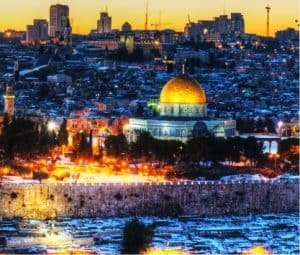
Going down the slope of the Mountain in order to reach the Old City, as many have done for generations, marks the beginning of our tour in this most ancient part of Jerusalem. We’ll start at a walkway found on top of the Old City walls, known as the Ramparts Walk, offering a unique, panoramic view of the area and its surroundings. Then we’ll visit one of the holiest sites in Jewish tradition, the Western Wall, also referred to as the Wailing Wall or the Kotel (for special information regarding Bar Mitzvahs here, celebrated on Mondays and Thursdays, see the Bar Mitzvahs page).
To get a full impression of the history and importance of this place, we’ll next visit the Western Wall Tunnels, which will help familiarize us with people’s way of life during the time of the Temple, as well as understand the delicate situation between the state of Israel and the Arab population of the city.
We’ll complete the experience with a short walk to the Southern Wall Excavations at the archeological Davidson Center and then continue to Mount Zion, where we’ll visit King David’s Tomb, a site of Jewish pilgrimage for centuries since the middle Ages.
Particularly meaningful will be the time we spend at Yad Va’Shem. Israel’s national Holocaust memorial site and museum. Dedicated to the study and commemoration of the murder of 6 million Jews during WWII by the Nazis and their assistants, with special sections focusing on children during this genocide, the collection of the victims’ names, the re-creation of the rich Jewish culture which had been wiped out by these atrocities and so forth.
The Old City’s charms and treasures will be further revealed to us on this day, as we make our way to the Jewish Quarter. As we walk through the quarter, we’ll get to see the four old Sephardic synagogues, as well as sites capturing life here as it was thousands of years ago, like the Jewish Cardo, which was the center of Jerusalem’s urban life during Roman times; the Herodian Mansions, the Broad Wall and the Burnt House, where we’ll watch a captivating audiovisual presentation of that era.
Better than any fictional story of time travel, we’ll jump thousands of years in time as we dedicate the second part of our day to the New City, where we’ll view older and newer neighborhoods, visit the Knesset, seat of the Israeli Parliament (open for visits on Sundays and Thursdays only), passing thru the ‘Prime Minister Hill’ and the beautifully and symbolically designed Supreme Court building. At the nearby Israel Museum, we’ll discover, among many other fascinating exhibits, the mysteries of the Dead Sea Scrolls at the Shrine of the Book and we’ll see the model of Jerusalem during the Second Temple period.
A mellow note will close our evening as we’ll stroll through the ultra-Orthodox neighborhood of Me’ah She’arim, allowing us to witness and understand how the locals lead their lives. Underlining the many contradictions Jerusalem manages to contain.
We’ll continue from there to the secular and modern pedestrian malls of Ben Yehuda Street and the neighborhood of Nachlaot, a renovated area of shops, galleries and cafés.
From this wild cave area, we will make our way to the Ein Gedi Antiquities National Park, where we’ll get the chance to see the remains of a singular Talmudic synagogue and mysterious mosaic floor. if time will permit we will have a nature short hike in the David stream while reading the bible how king sole chased David thru this land.
The extraordinary natural wonder known as the Dead Sea will welcome us with its uniquely healing qualities as we have ourselves a soothing morning dip, enjoying the “greatest outdoor spa in the world”, which is also the world’s lowest and saltiest body of water. Being the lowest point on Earth also means that the extra layers of atmosphere screen the sun more than anywhere else, allowing for a longer exposure to the sun, maximizing its health benefits and minimizing any possible radiation damages.
T
The rest of the day will be dedicated to relaxing and floating in the Dead Sea resort.
For the more adventurous in spirit, there is also an option of climbing up to see the sunrise from the top of Masada. The climb takes about an hour and we’ll need to leave at around 5 am. Depend on the time of year. Still, it is highly Very recommended as the view is breathtaking.
I specialize in crafting unforgettable travel and leisure packages of Israel. please contact me and let me show you.
For other tourists’ opinions on my role as tour guide, please refer to The Testimonial Page
You can read more here: About Me
If you have any question on VIP tours Israel, requests or thoughts, please Contact Me

